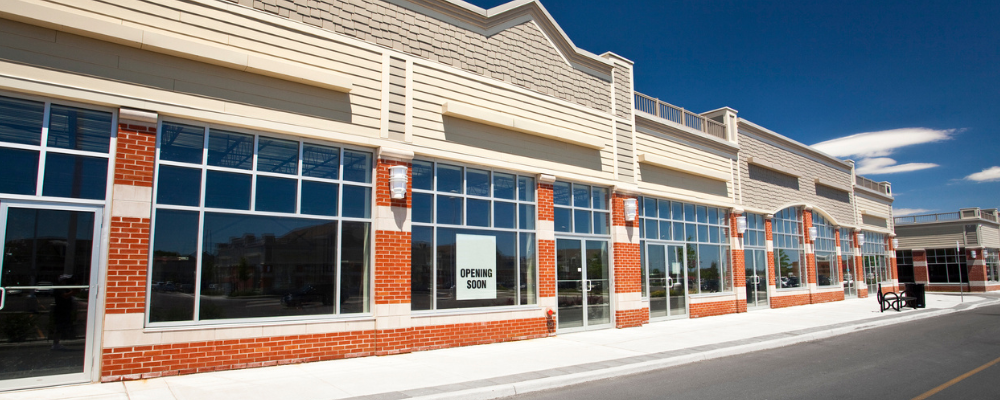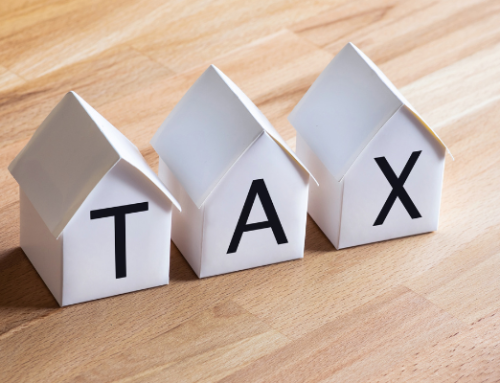By Ryan Paul, CPA
Keep reading to understand:
As we step into 2024, the commercial real estate landscape is in a state of flux, influenced by technological advancements, evolving consumer trends, and global economic shifts. This year is set to present opportunities for investors, particularly within segments like multi-family apartments, industrial properties, and digital infrastructure.
However, it’s crucial to note that leading U.S. regulators have identified the commercial real estate market as a significant risk factor for financial stability in 2024. They’ve pinpointed rising vacancy rates, declining office property values, escalating interest rates, and the potential of an economic slowdown.
For enduring success, the commercial real estate sector must remain adaptable, leverage innovative solutions, and place a firm emphasis on sustainability.
“Overall, the outlook for commercial real estate next year is muted in terms of capital and space market performance, with a continued recalibration of sorts across all sectors,” Ermengarde Jabir, Senior Economist at Moody’s Analytics.
Emerging CRE Trends
Amidst what industry insiders are terming “The Great Reset,” the real estate landscape is in a transformative phase. Today’s tech, consumer preferences, and a post-pandemic economy are driving dynamic changes across sectors.
Shift in Office Dynamics
The office sector has faced significant disruptions due to the pandemic-induced shift to remote work. Despite efforts to encourage a return to physical offices, utilization rates have stalled at around 50 percent of pre-pandemic levels, creating challenges for landlords and businesses aiming to reinstate traditional work settings.
In Q3 2023, the national office vacancy rate climbed to 19.2 percent, nearing the historic peak of 19.3 percent in 1991, up from Q2’s 18.9 percent. Notably, suburban markets have outperformed downtown areas, benefitting from shorter commutes and mixed-use communities, reflecting the evolving trend of work-life integration. Despite these fluctuations, there’s continued demand for Class A commercial space.
Resilient Retail Evolution
Retail demand surged in the last 18 months, leading to nearly 35 million square feet of new retail space across various shopping center types in 2023. Forecasts for 2024 anticipate stable performance, especially in neighborhood centers, with vacancy rates at a ten-year low of 4.1 percent in September.
Despite the rise of e-commerce, the industry noted a return towards shopping centers for goods and services. A resurgence of inflation or a recession could hinder the sector’s progress.
Housing Demand
Rising mortgage rates have made homeownership unattainable for many middle-class individuals, intensifying the ongoing shortage of affordable housing. Consequently, the demand for multi-family apartment properties and residential rentals has surged, driving robust rent growth and increased property values within the commercial real estate sector.
Throughout 2023, multi-family properties maintained a steady 5 percent vacancy rate, largely sustained by persistent high interest rates deterring potential homebuyers and maintaining the demand for multifamily residences. However, the luxury apartment segment faced challenges, witnessing reduced demand leading to rent decreases and concessions as they struggled to attract occupants.
Industrial Sector Surge
Increased consumer spending has fueled growth in the trucking, warehousing, and manufacturing sectors, driving robust demand for industrial real estate. The ongoing nearshoring trend and the competitive e-commerce landscape forecast continued growth, underscoring a positive outlook for the sector.
Regulatory incentives, like energy credits and tax deductions from acts such as the Inflation Reduction Act and the CHIPS Act, play a vital role in incentivizing these developments. However, there are two potential obstacles: a scarcity of available land near skilled labor pools and the need for a robust energy infrastructure capable of supporting these industrial facilities.
Digital Economy Expansion
The digital economy has spurred a notable segment within commercial real estate, featuring server farms, data centers, and cell phone towers, maintaining consistent growth for over two decades. Looking ahead, this sector’s expansion hinges on amplified global connectivity, the ongoing rollout of 5G technology, and the surging integration of artificial intelligence. These factors are expected to fuel considerable real estate demand not only in 2024 but also in the foreseeable future.
However, challenges persist, including construction constraints due to land, labor, and material shortages, coupled with high energy costs for cooling systems, hindering swift facility construction or conversion to match digital growth.
Growth Opportunities
Sustainability measures have taken center stage, driven by environmental, social, and corporate governance (ESG) mandates. Property owners and managers are actively focusing on sustainability, responding to the increasing demand for eco-friendly buildings. Embracing initiatives such as the adoption of solar power reflects this paradigm shift toward greener real estate.
Additionally, the evolution of proptech presents a vast array of opportunities. Proptech’s dynamic nature continuously introduces novel tools and approaches, empowering commercial real estate owners and investors to enhance their decision-making processes. From integrating smart thermostats to facilitating digital rent payments, the potential for leveraging proptech is substantial, offering operational efficiency and competitive advantages.
AI’s potential in real estate is promising, revolutionizing property search, investment analysis, customer experience, due diligence, and fraud detection. Yet, many CRE experts remain unfamiliar with many of AI’s capabilities. Barriers to adoption include a lack of understanding and misinformation about AI.
Economic Hurdles
Critical economic challenges call for proactive strategies and adaptive responses within the CRE industry. Escalating interest rates have significantly raised borrowing costs for investors, making refinancing difficult and tightening lending standards amid fluctuating bond values.
Additionally, the prospect of an economic slowdown could exacerbate existing challenges. This scenario might further complicate efforts for commercial landlords, impeding vacancy filling and rent enhancement.
Persistent inflation has increased operational expenses, notably in labor and building maintenance. Amplified by consumer spending anxieties, these factors can significantly impact businesses reliant on leasing commercial properties for expansion strategies.
Determining the best path for your commercial real estate business—whether it involves maintaining stability, downsizing, or expanding—hinges upon reliable market insights and an adaptable mindset. A strategic approach, supported by these insights, offers the most effective direction for navigating the dynamic real estate landscape.
For inquiries regarding the trends influencing your organization’s real estate decisions, contact Ryan Paul, Partner on PBMares’ Construction & Real Estate team.





